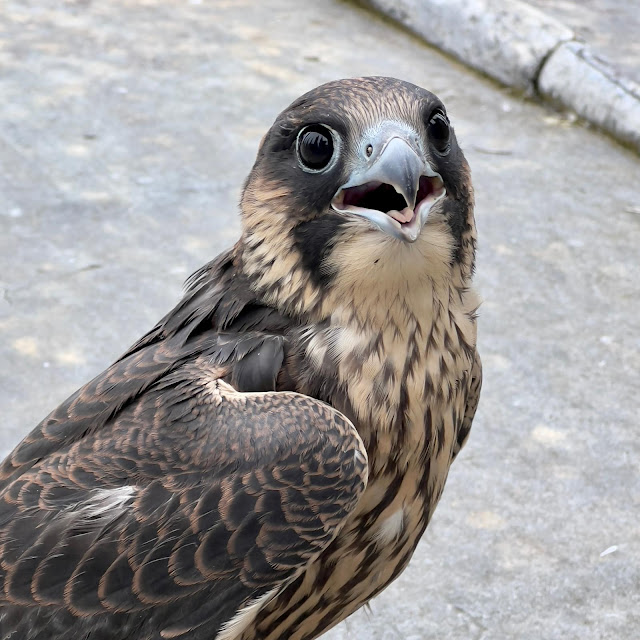Immature Peregrine returned to the Minster (c) 2022 Ivan Nethercoat
ditto
After a while it explored the garden in a series of wing assisted jumps and scuttles and we hoped that it might manage to get airborne but it just shifted to another corner of the garden, then another until it discovered the barbecue. It had experimented with perching on the rim of a garden urn, and various corners of the garden but the barbecue has a domed top with a handle on it which seemed ideal as a perch because it allowed the bird to wrap its talons round it and grip, making it more secure. However there was some polythene over the handle, so the first time the bird slipped ignominiously off it on to the ground while I was watching. It scuttled off.
The peregrine scuttle reminded me of Margaret Thatcher who inclined her body forward and took small steps a bit like a penguin, and it seems a Peregrine. It moved quite quickly in this way and one can imagine that thus inclined, it is in the right posture to open its wings and take flight when on the ground. It did use its wings with jumps to get up to the urn when its wingspan underlined the confined space of the garden, but it got to the barbecue by walking along a ledge behind it. Later it managed to get rid of the polythene to grip the handle firmly and then its eyelids came up and it went to sleep.
It sounds peculiar and at one level it’s ridiculous, but there is a distinct sense of being honoured by being so close to such a feral creature, but after the surprise had worn off, a sense of concern intruded. We spent a good deal of time investigating how we could return the bird to its parents and its place on the tower. I telephoned the Professional Falconers Association and left a message describing the situation, and about an hour later they called back to advise us not to try and catch the bird unless it seemed distressed. Apparently young Peregrines that are restored after a trauma tend not to have ‘good outcomes’ as they put it, and I found that there is a literature on sibicide among the species.
Penny then ‘phoned the vet who suggested we call the Bradbury bird and wildlife rescue (ed. apparently, no longer operational) who said they would come to try to take the the bird back to the nest on the tower of the Minster. They arrived, borrowed a towel to enfold the bird, using a tea towel to hood it and took it back up the long spiral staircase in the tower. They then took the close-up photograph where you can see the pinnacles of the Minster reflected in the bird’s right eye. (ed. - To see this you may have to click on the first image above)




1 comment:
So it was ok then?
Post a Comment